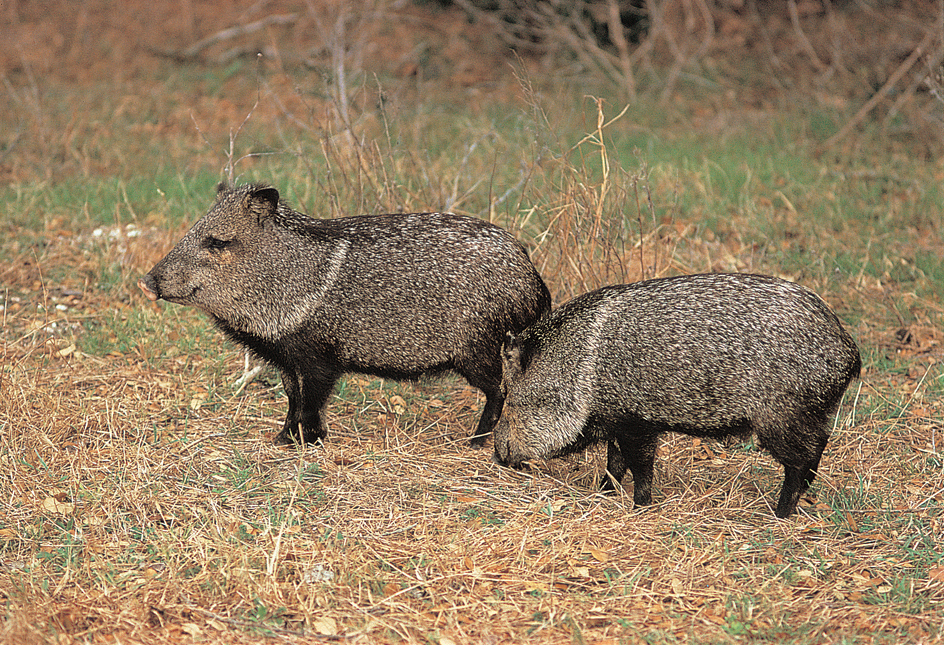Peccary, << PEHK uhr ee, >> is the name for three hoofed animals distantly related to the wild hog. The three living species (kinds) of peccaries are (1) the collared peccary, or javelina; (2) the white-lipped peccary; and (3) the Chacoan peccary, or tagua. The collared peccary lives in many sections of South America and as far north as the southwestern United States. The white-lipped peccary inhabits an area from central Mexico south to Paraguay. The Chacoan peccary lives in the Gran Chaco region of Paraguay, Argentina, and Bolivia. Scientists discovered the Chacoan peccary in 1975. They previously thought the animal had become extinct more than 10,000 years ago. The Chacoan peccary is an endangered species.

Peccaries look much like slender hogs. The collared peccary stands about 21 inches (53 centimeters) high at the shoulder. It has a coarse, grizzled, blackish-gray coat with a gray collar. The white-lipped peccary is larger and darker. It is marked by white patches that extend from the mouth along the side of its face. The Chacoan peccary, the largest living species, stands about 30 inches (76 centimeters) high at the shoulder. It has a coat of brownish-gray bristles with a gray collar. Peccaries have a large gland on their arched back, about 8 inches (20 centimeters) in front of the tail. When the animal becomes excited, the gland gives off a small amount of musk, a substance with a strong odor. For this reason, peccaries are sometimes called musk hogs.
Peccaries inhabit forests and desert scrublands. They feed chiefly on roots, but they sometimes prey on small animals. White-lipped peccaries travel in bands of up to several hundred individuals. Collared peccaries and Chacoan peccaries form groups of less than 20. Peccaries are shy, timid animals that flee from danger whenever possible. But if cornered, they fight viciously with their sharp teeth. Their most common natural predator is the jaguar. Female peccaries give birth to rabbit-sized young, usually twins. The young have reddish coats with a black stripe down their backs.
Native Americans have long hunted peccaries for food. Unlike hogs, these animals have never become domesticated.
